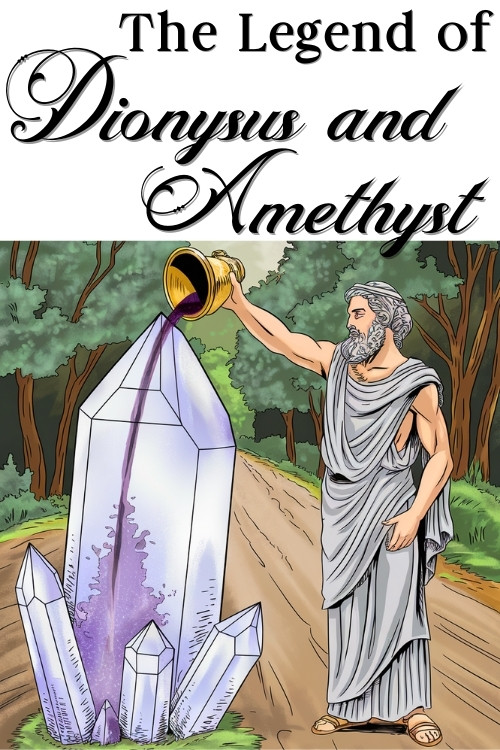In the age when gods still walked among mortals, respect was everything, and insults were unforgivable. Dionysus, god of wine and revelry, was no acceptation to this rule. When a mortal offended him, anger boiled over like wine spilling from a too-full cup. In his fury, he swore that the next soul to cross his path would be torn apart by his sacred tigers.
And so destiny wove her threads.
A young maiden named Amethyst, unaware of the storm gathering before her, set out on a pilgrimage. With quiet devotion she made her way toward the temple of Artemis, goddess of the hunt. But her path led straight into Dionysus’s hunting grounds and straight into the heart of his fury.
Artemis’s Divine Intervention
From the shadows of the forst padded tigers with eyes of fire, their muscles coiled, their gazes fixed on the lone maiden. Amethyst froze, fear tightening her chest, and as the beasts leapt she cried out to Artemis for help.
The goddess heard her worshipers plea. In a flash of divine mercy, Amethyst’s mortal body was turned to stone, a pure white quartz, unyielding and eternal. The claws of Dionysus’s beasts scraped harmlessly against the crystal, their rage extinguished in confusion. At last they turned, vanishing back among the trees, leaving only silence and the cold gleam of stone behind.
Remorse and Redemption
When Dionysus arrived, he saw not the guilty punished, but an innocent life caught in his anger. His range melted into remorse, and raising his goblet, he poured out his finest wine across the quartz figure.
The crimson liquid flowed over the pale stone and sank deep within. Slowly, the white crystal turned violet. From that act of sorrow and remorse, the first amethyst was said to have been born.
The Stone of Sobriety
In time, the Greeks came to believe this beautiful crystal could guard against intoxication, preserving clarity even in the midst of Dionysian revels.
Goblets carved from amethyst gleamed on banquet tables, their purple surfaces catching the torchlight. To drink from them was to defy excess, to hold fast to reason when wine and laughter threatened to sweep all restraint away.
And there’s the irony. Dionysus, god of abandon, in his remorse unwittingly created the very stone said to protect mortals from his own domain. A reminder that even gods could err, and that repentance can carve beauty out of tragedy.
A Legacy in Stone
Centuries turned, empires rose and fell, yet the tale of Amethyst endured. Greek temples whispered it in prayer, medieval courts treasured the violet stone as both jewel and symbol. The legend became as much a part of the gem as its shimmering hue.
Even today, amethyst is worn not only for its elegance but for the wisdom it is said to carry. To wear it is to carry a fragment of myth: a gift from the gods, shaped by sorrow, cherished for its grace.
Um… Or not…
Here lies the twist in the tale. Though most retellings place this tale in ancient Greece (or Rome, with Bacchus and Diana in place of Dionysus and Artemis), the legend of Amethyst was not whispered by the ancients at all.
It was first written in 1576 by French poet Rémy Belleau. Drawing upon Greek mythology for inspiration, he penned the story to explain the origins of amethyst and its ties to the god of wine. His words, not those of antiquity, gave the purple stone its mythical birth.
Still, the fiction took root. Over time, Belleau’s invention became inseparable from gemstone lore, shaping how we see amethyst today. A name that literally means “not drunken,” bound forever to the myth of wine, regret, and redemption.
🔗Read more Amethyst Myths and Legends from around with world.
📌 Save this amethyst myth so you can find them again. And don’t forget it makes great marketing content for your jewellery business, so feel free to retell it!



